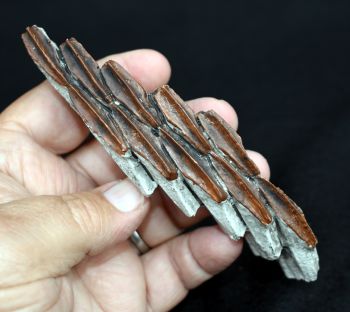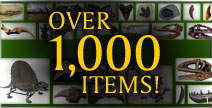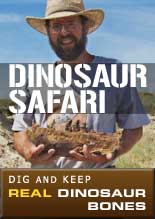
Edmontosaurus was a large bipedal plant-eater common in North America during the late Cretaceous. It is one of the best-known “duckbilled” dinosaurs (hadrosaurus) characterized by a particular denture formed by batteries of hundreds of small lozenge like teeth which it used for pulverizing its tough plant foods. Edmontosaurus was up to 39 feet long and 16 feet tall.
The teeth in the skull were arranged in the form of dental batteries in the posterior region of the mouth. Edmontosaurus was constantly replacing its teeth as the tops were worn down. At any given time there may have been 1000 individual teeth The method of feeding for Edmontosaurus (and other hadrosaurs) is thought to have been along the lines of plants being cropped by the keratinous beak, and then ground by the teeth at the back. As in all dinosaurs, when these teeth became worn and lost, new teeth would erupt to replace them. A 2009 study by Williams et al studied the micro wear patterns on the teeth and concluded that Edmontosaurus were probably grazers as opposed to selective browsers.
Edmontosaurus annectens was a species of flat-headed or saurolophine hadrosaurid ornithopod dinosaur (a "duck-billed dinosaur") from the very end of the Cretaceous Period, in what is now North America. Remains of E. annectens have been preserved in the Frenchman, Hell Creek, and Lance Formations. All of these formations are dated to the late Maastrichtian stage of the Late Cretaceous Period, representing the last three million years before the extinction of the dinosaurs (67 to 66 million years ago). Edmontosaurus annectens is known from numerous specimens, including at least twenty partial to complete skulls, discovered in the U.S. states of Montana, South Dakota, North Dakota and Wyoming, Colorado and the Canadian province of Saskatchewan. It was a large animal, up to approximately 12 meters (39 feet) in length, with an extremely long and low skull. E. annectens exhibits one of the most striking examples of the "duckbill" snout common to hadrosaurs. It has a long taxonomic history, and specimens have at times been classified in the genera Diclonius, Trachodon, Hadrosaurus, Claosaurus, Thespesius, Anatosaurus, and Anatotitan, before being grouped together in Edmontosaurus.
resin
5 x 1.25 x 1 inches
Item 3109
Category: Replicas
Type: Teeth
Phylum: Vertebrates
Class: Dinosaurs
MORE PHOTOS:



Now Over 1,000 Items!
PrehistoricStore.com offers the largest selection of replica fossils and other fossil-related products anywhere in the world!
Download a Full Catalog (3MB PDF)
OVER 260 PAGES OF REPLICAS AND MORE!
